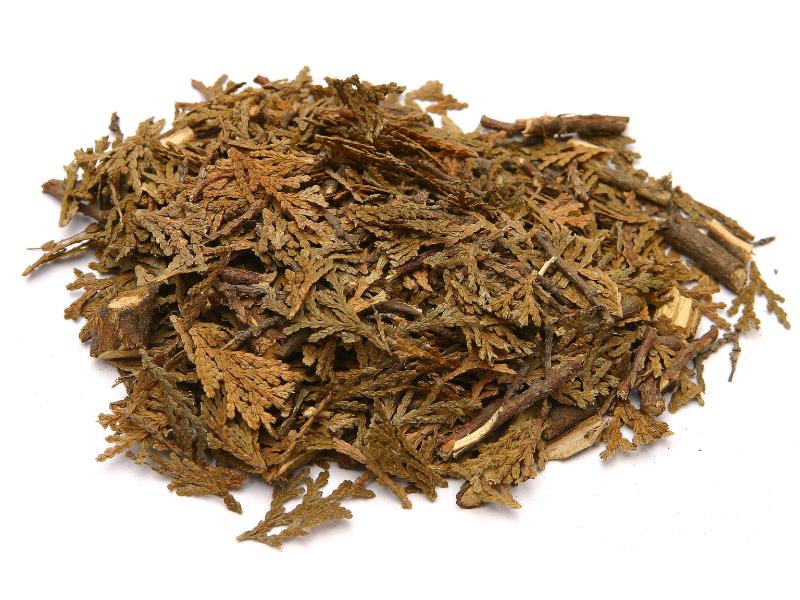Search in medicinals
Platycladi Cacumen
Arborvitae leaf
侧柏叶 〔側柏葉〕 cè bǎi yè

Alternate English names: Oriental arborvitae leaf
Alternate Chinese names: 柏叶 cè bǎi yè; 侧柏 cè bǎi
Kingdom: Plant
Origin in PRC Pharmacopoeia: Platycladus orientalis (L.) Franco. [= Biota orientalis (L.) Endl.; Thuja orientalis L.] (PRC Pharmacopoeia)
Origin in unofficial sources: Platycladus orientalis (L.) Franco* [= Biota orientalis (L.) Endl.; Thuja orientalis L.]; Cupressus torulosa D. Don; Sabina recurva (Buch.-Ham.) Antoine [= Juniperus recurva Buch.-Ham.) Antoine]
Use: Medicinal
Category: Blood-stanching agents / Blood-cooling blood-stanching agents
Properties: Bitter, astringent; slightly cold.
Channel entry: Lung, liver, and large intestine channels.
Actions and indications:
- Cools the blood and stanches bleeding: Used for a variety of bleeding patterns due to blood heat, such as vomiting of blood (blood ejection), expectoration of blood, nosebleed, bloody stool, flooding and spotting, or bloody urine.
- Transforms phlegm and relieves cough: Cough, especially when due to lung heat with phlegm.
- Additional applications: Cè bǎi yè may be used externally to treat burns and scalds, as well as hair loss. It may be used as a powder or made into a formula for topical application.
Dosage and method: Oral: 10–15g in decoctions. It may be char-fried to stanch bleeding, but it is used raw for transforming phlegm. For topical use, decoct the dried leaves as a wash, or crush and apply the fresh leaves.
Product description: These twigs vary in length and have numerous branches. The leaves take the form of fine deep green scales that are densely interlocked and lie tightly against the flat stem. The twigs are brittle and break easily.
Quality: Green, unbroken twigs are the best.
Production area: Most parts of China (especially Liáoníng and Shāndōng), Korea, and Japan.
Etymology: The name cèi bǎi yè 侧柏叶, literally, side arborvitae leaf,
reflects the way in which the leaves grow laterally from the twig.